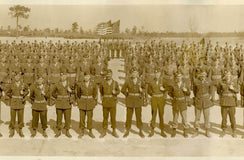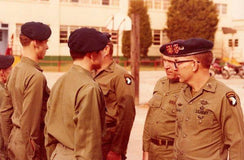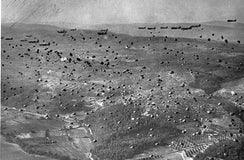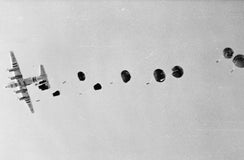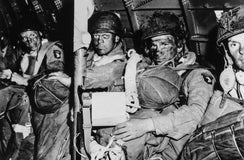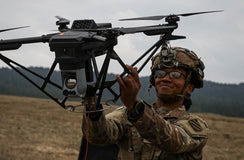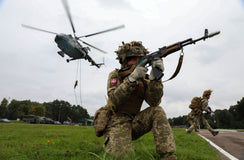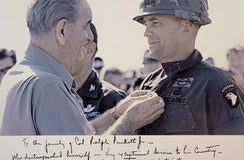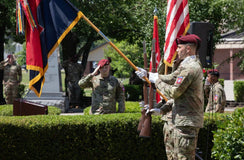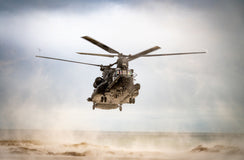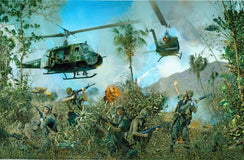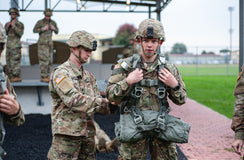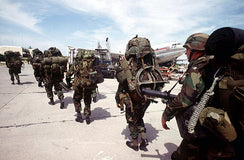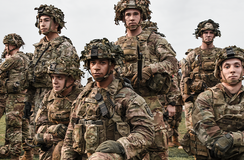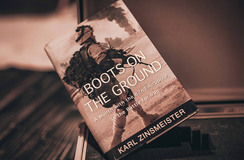A Brief History of Paratroopers in World War II
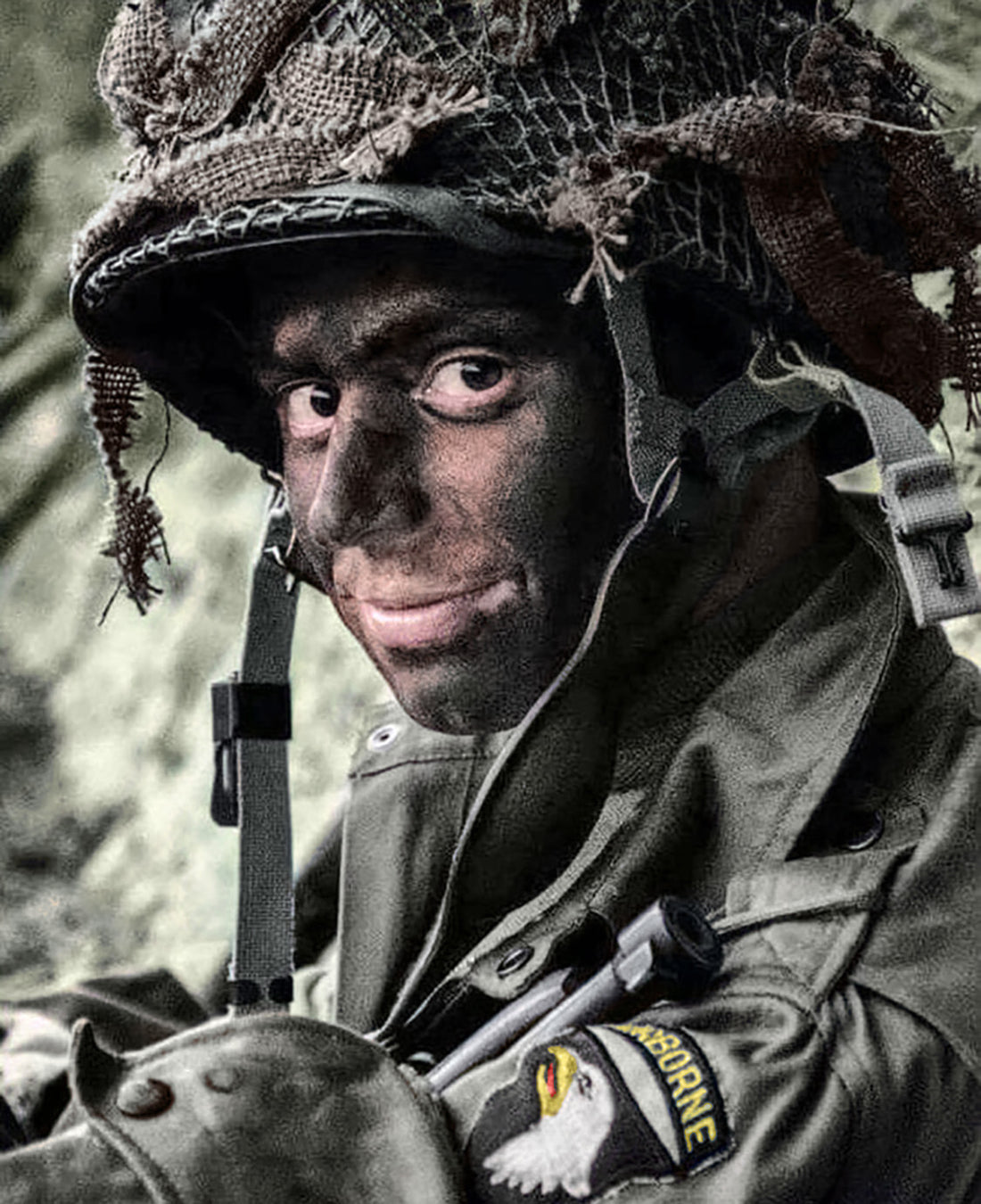
It was a wild idea from Lewis H. Brereton. Drop-in American troops to the German city of Metz by way of a parachute from a bomber plane. World War I was in its final days and Lieutenant Colonel Brereton brought his idea to Brig. General Billy Mitchell. Up until then, this idea of dropping in troops from the sky was something foreign, crazy, and delusional even. Lives weren’t valued the same way they are today in combat, so creativity and anything that strived from the normal, face-on-type of combat seemed superfluous and unnecessary.
Mitchell signed off on the plan, however, when it was brought to the attention of General John Pershing, it was quickly shot down. A few weeks later, Germany formally surrendered, and the Treaty of Versailles was signed. A second chance to revisit Lewis Brereton’s idea never came about and the United States returned to peacetime.
When World War II broke out in the fall of 1939, it was the Germans that fully embraced this idea of dropping troops in from the sky. The Soviets had already successfully put airborne operations to use in 1935 and as a result, Germany took notes and formed the Luftwaffe aerial warfare branch in WWII. Their first jump took place during Operation Weserübung, the invasion of Norway, in the Spring of 1940. Their troops seized airfields at the Fortress of Masnedo in the first attack ever made by paratroopers.
Not long after, the British got hold of the German doctrine manual on paratrooper operations and quickly put it to use in their own military strategy. This training and preparation guide to this new style of warfare was passed along the allied Americans as well and became a key difference-maker moving forward in the war.
Operation Husky
An accidental success. The first division-sized employment of airborne forces for the Allies came during the invasion of Sicily, otherwise known as Operation Husky in 1943. Gale-force winds made the Allies’ first drop a difficult one as troops missed their targets and ended up scattered throughout Southeast Sicily.
Axis forces, however, did not anticipate any drops that day due to the rough conditions and actually became confused and disoriented at where the Allied troops were coming from. The airborne attack played a crucial role in the collapse of Italian forces and was truly a turning point in the war.
Normandy
Operation Overlord, otherwise known as The Battle of Normandy, is more often thought of as an attack by sea on the beaches of France. But the 82nd and 101st Airborne also played a major part in this key battle of World War II. A night-time drop was ordered by General Dwight D. Eisenhower with the intention of holding areas inland during the invasion of the beaches.
Rough conditions caused their drop to suffer massive losses and scattered troops throughout Normandy. Aircraft came under heavy fire and many men were lost during the mission; however, the remaining paratroopers were successful in their brave mission and prevented German counter-attacks and created chaos behind enemy lines during the D-Day landings.
Operation Market Garden
The 82nd and 101st weren’t done. Operation Market Garden in the Netherlands was the brainchild of Field Marshal Sir Bernard Law Montgomery, Winston Churchill, and Franklin D. Roosevelt. The mission was to create an invasion route into northern Germany by seizing a series of nine bridges.
Seen as the greatest airborne mission in size, the Allies sent over 34,000 troops into the Netherlands by drop. German defenses were strong, and the Allies suffered considerable losses, but not without unbelievable heroic efforts from the 82nd, 101st, 1st Airborne, and Polish 1st Independent Parachute Brigade.
The loss of the Arnhem Bridge made the mission a failure. However, the 82nd and 101st were able to capture the north end of the Nijmegen Road Bridge and fight off German counter-attacks at the unfortunate cost of many casualties. Though Operation Market did not meet its objectives and was regarded as a failed operation, it still allowed for advancement and carried the momentum into the eventual Battle of the Bulge, which was a crucial victory for Allied troops. Soon after, the Allies were able to break the Siegfried Line and successfully invade Germany.
The efforts of the 82nd and 101st Airborne are not to be forgotten. Their bravery and relentless devotion to our country did not go unnoticed. Airborne operations were born out of their efforts in World War II and every life was given for the country’s success in stopping the Axis powers is honored today by every man and woman who continues their legacy serving in the US Airborne forces


